As some of you might know I am a volunteer at the local history museum. preHistorisch Dorp Eindhoven once started as an archeological experiment, building a house based on archeological research in a probable historical way. It grew into a village and a museum over the last 38 years where still a lot of experimental archeology happens every day. This means every day you also have the chance to meet volunteers who try to live and work as they probably did in those times. I am using words as probably on purpose. History is not set in stone and we learn new things every day.
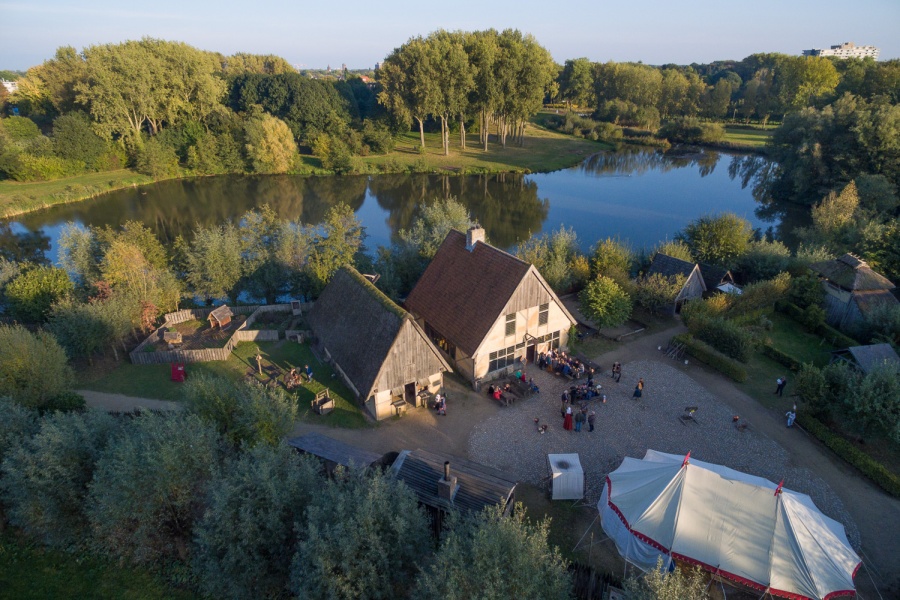
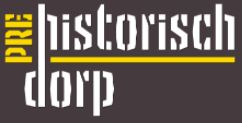
This also means for brewing and the history of beer. Stories you thought you knew about the history of beer might turn out to not be entirely true over the years. Other stories come back. Some rear their stubborn head time and again even if it has been proven over and over again this version of the story is not very likely (I am looking at you, IPA)(And yes, also you, you dirty water story; if the water really was too dirty to drink, what did people use to make their beer with? Cow milk?).
But back to the museum. I have been a volunteer at the museum since my late teens, early twenties. Back then there were specific groups of people specialising in specific things: There was a cloth/clothing group, a food group, a brewing group, a builders group, a pottery group, a blacksmith group, a fighting group and more. We still have these, but the lines are a bit more blurry, some groups have vanished over the years, others have appeared, etc. Anyway, in those days I was interested in toys of the medieval times, I tried my hand on some sewing and weaving, I tried some pottery, I helped with the preparation of food and I helped organise the 18+ events since back then I was still planning on becoming a sexologist and I just finished a psychology minor in sexology.
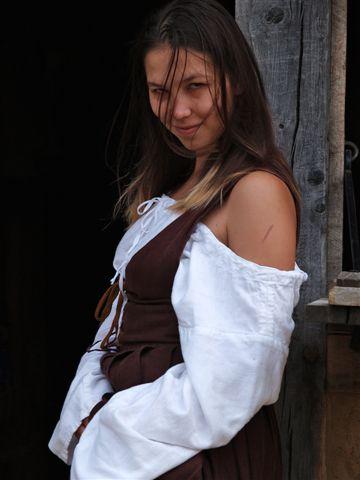
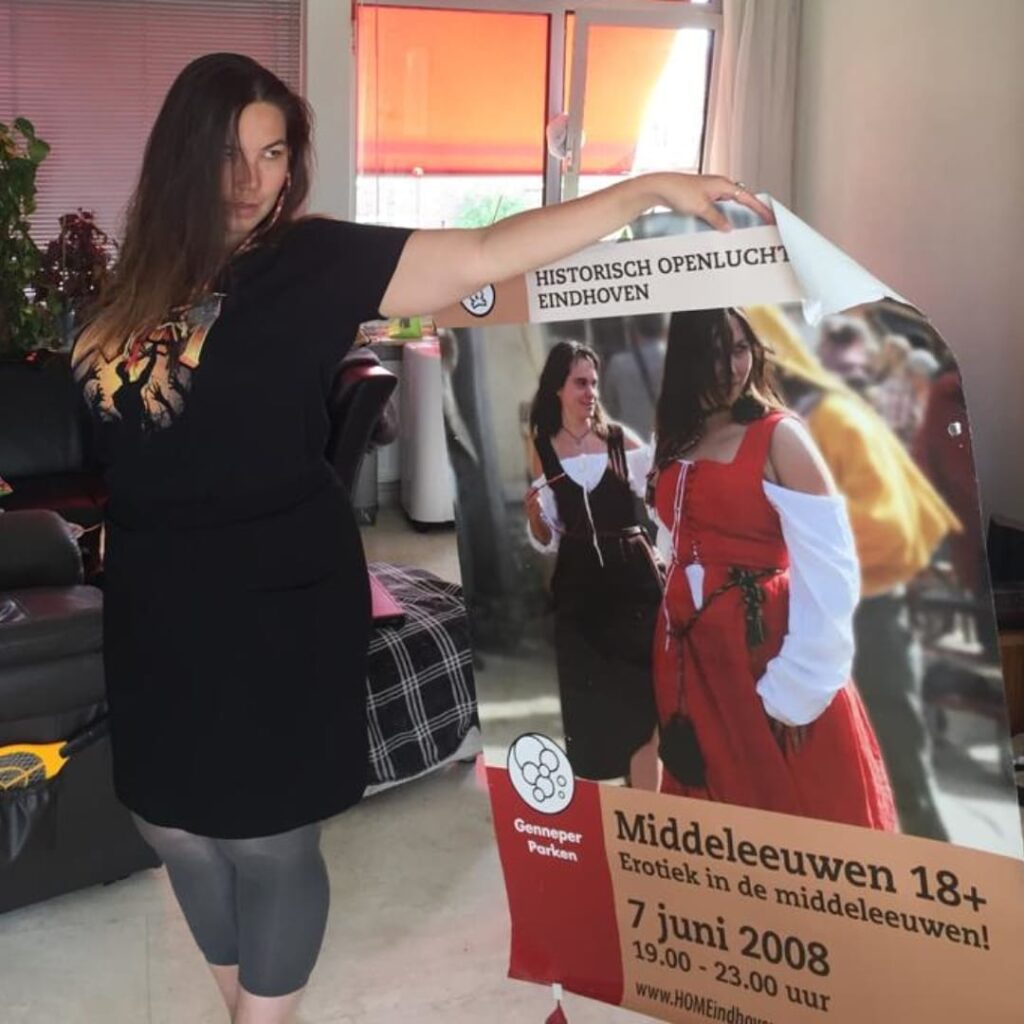
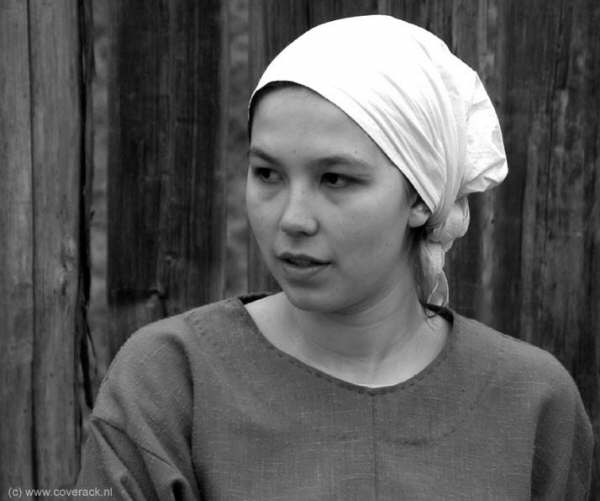
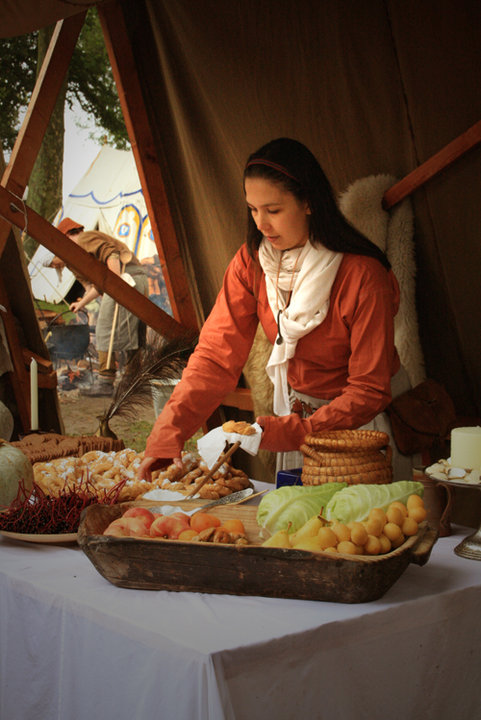
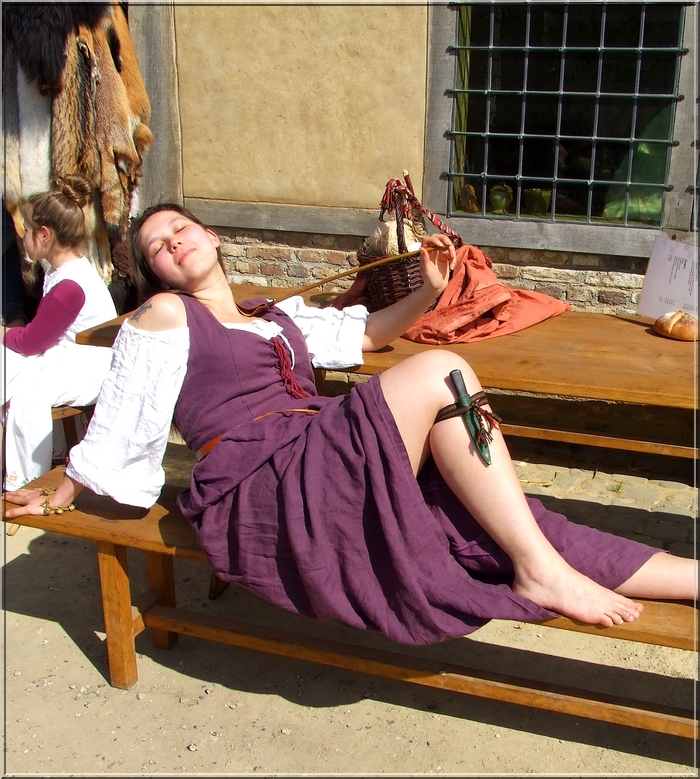
In 2011 I moved to Zaandam. This made it hard to volunteer at the museum and I stopped. I came back to Eindhoven again in 2017 and the first thing I did was going back to the museum. Now I mostly did backstage odd jobs, helping in marketing which became helping in privacy and security over the years because I specialised in those areas professionally while I was away. But slowly I also helped on stage again. Mostly with events, and playing with the idea of reviving the brewing group. You see, one of the groups that vanished over the years was the brewing group. This was due to some unfortunate events and the downside of it was that a lot of the knowledge disappeared with the groups as well. So at first I was just looking for people who wanted to brew as well. Then I went looking for people who might know things, offline and online. And of course started reading books and essays about the specific subject.
Our most important inspiration are Merryn and Graham and Susanne Verberg, but also Martyn Cornell, Leendert Alberts and Roel Mulder. Via https://exarc.net/ we also found the historical brewing chat on Discord. But then…. Covid happened. So we put everything, well almost everything on hold. We kept reading everything of course. And instead of copy-pasting everything I will give you a bunch of links to read if you are interested. I will talk more in-dept about the museum itself, historical brewing an beer in history in later blogs.
- Ancient Malt and Ale, the blog by Merryn and Graham
- Zythophile, the blog by Martyn Cornell (be sure to especially read his findings on IPA)
- Mashing in techniques by Merryn and Graham
- Brew Viking Stone beer by Susan Verberg
- Vrouwen brouwen al sinds mensenheugenis bier by Eliane van den Ende
- Exarc.net about brewing
- Hot Rocks!
- Searching for medieval ale
- Een geschiedenis van bier en pils by Enne Koops
- Where were the Viking Brew Houses by Merryn and Graham
- Of Boyling and Seething by Susan Verberg
- Medieval Mead and Beer by Susan Verberg
- Bier en Koekjes by Frank Wiersema (who will be brewing with us)
- Brewing Mesopotamian beer by Tate Paulette
- Cooking in baskets using hot rocks by Jonathan Thornton
- Medieval copper kettle hopped beer
- Baltic farmhouse ale by a Baltic Homestead
- Reconstructing Medieval Gruit Beer: Looking Beyond the Botanicals by Susan Verberg
- Ancient Beverage in the Iron Age by Andrea Mariani
Also books and articles you might find interesting are (mind you, the amount of research and credibility differs): Brouwen aan de Eem by Leendert Alberts, Verloren Bieren van Nederland by Roel Mulder, Strange Tales of Ale by Martyn Cornell, The Story of Brewing in Burton-on-Trent by Roger Protz, The Truth of Women and Beer: Witches by Kharla Graham, BrewBritannia by Jessica Boak and Ray Bailey, Der Zoigl by Wolfgang Benkhardt, De Oude Brouweryen van Eyndhoven by David Hendrich, Historical Brewing Techniques by Lars Marius Garshol, Viking Age Brew by Mika Laitinen, An Early Meal by Daniel Serra and Hanna Tunberg, Steinzeitbier by Ulrich Bähr, The River Cottage by John Wright, HOT ROCKS! by Geir Grønnesby, From Herbal to Hopped Beer by Susan Verberg, Gruit Ale by Elska á Fjárfelli (Susan Verberg) and Robert of Ferness (Ken Stuart), Medieval Ale & Beer by Elska á Fjárfelli (Susan Verberg), Kuitbier. Herintroductie van een Nederlandse succesformule uit de middeleeuwen, by Leendert Alberts, Medieval herbal ale: Gruit Demystified by Elska á Fjárfelli (Susan Verberg), The Rise and Fall of Gruit by Susan Verberg, Laat die vrouwen maar brouwen, The brewers of Babylon by Elke Maier, Craft beers uit de late middeleeuwen by Leendert Albert and Poken en Stoken.
In 2020 we did participate in the historical food fest in the museum. Not exactly brewing, but talking about beer through the ages nonetheless. We also gave people the opportunity to hear more about the history of the beers they could drink in our tavern. We talked about the major part women played in beer and brewing, witches, the mythology around brewing, gruit and hops and gruit houses, beer and the preserving of food in medieval times, the rise of bottom-fermented beers, Gambrinus, and the specific beer history of Eindhoven.
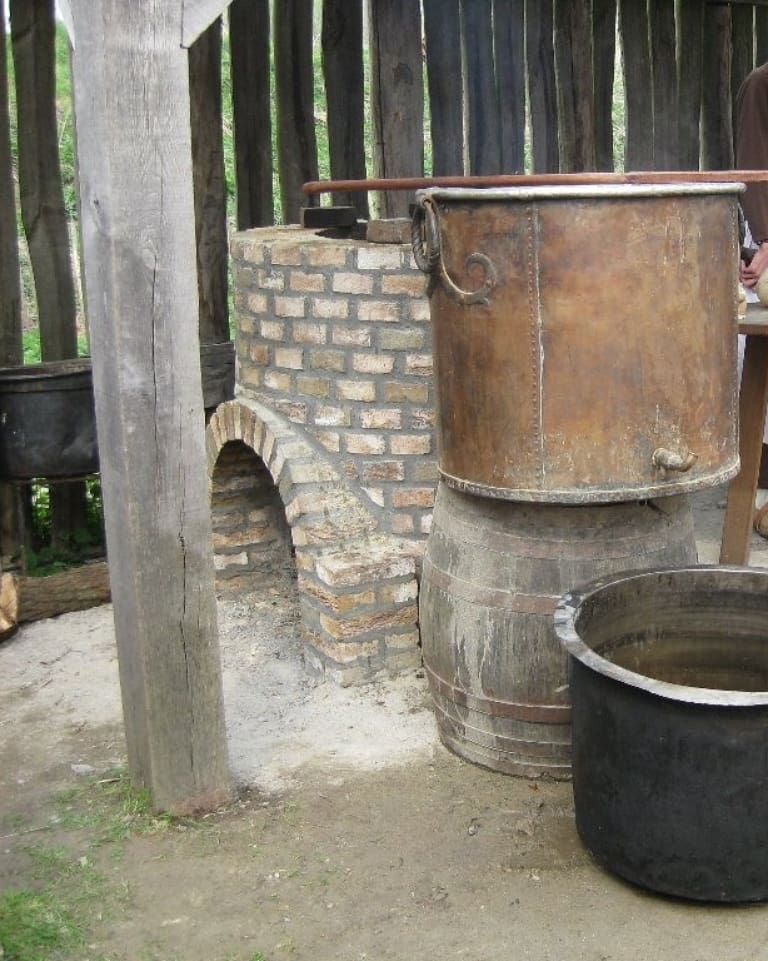
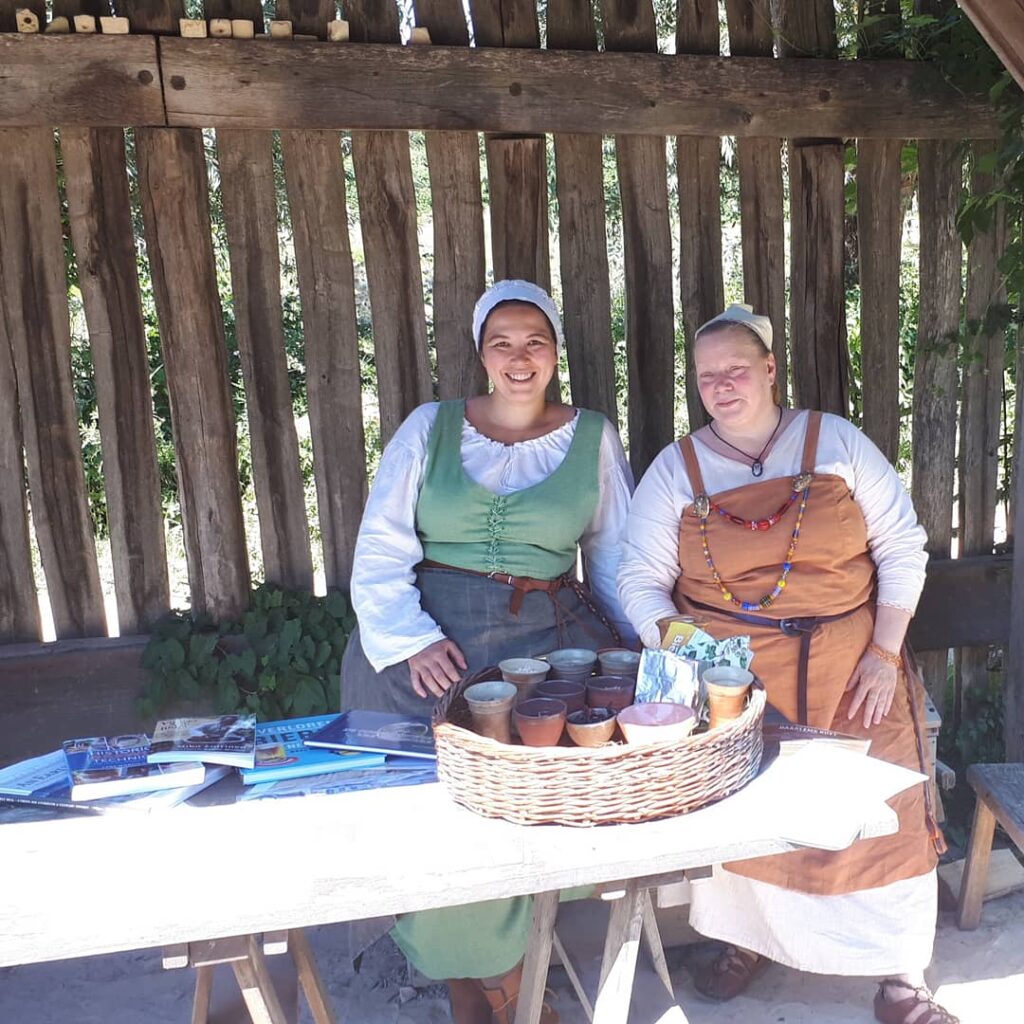
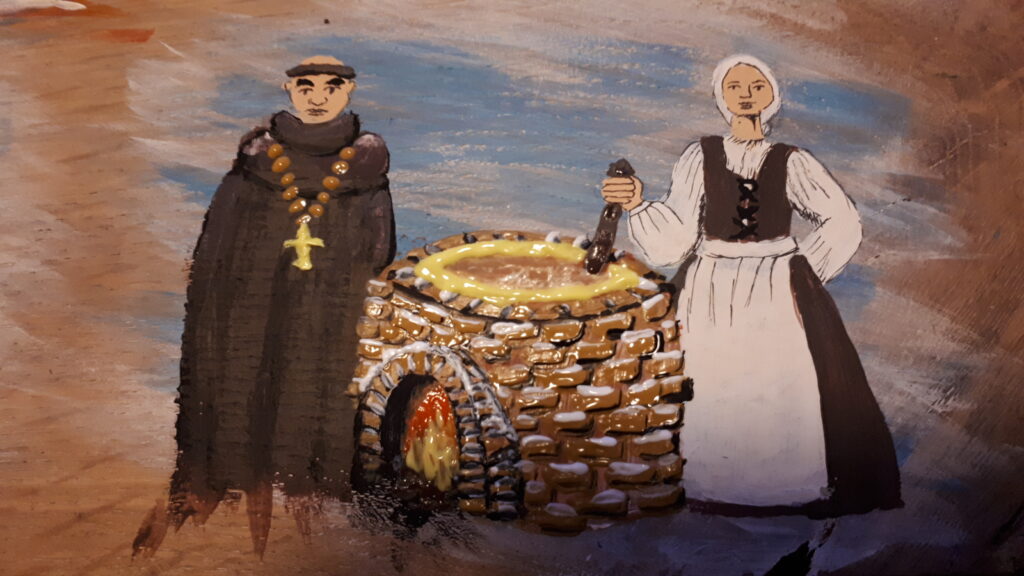
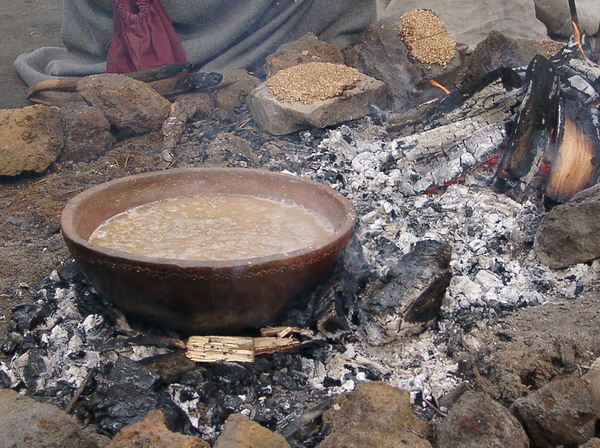
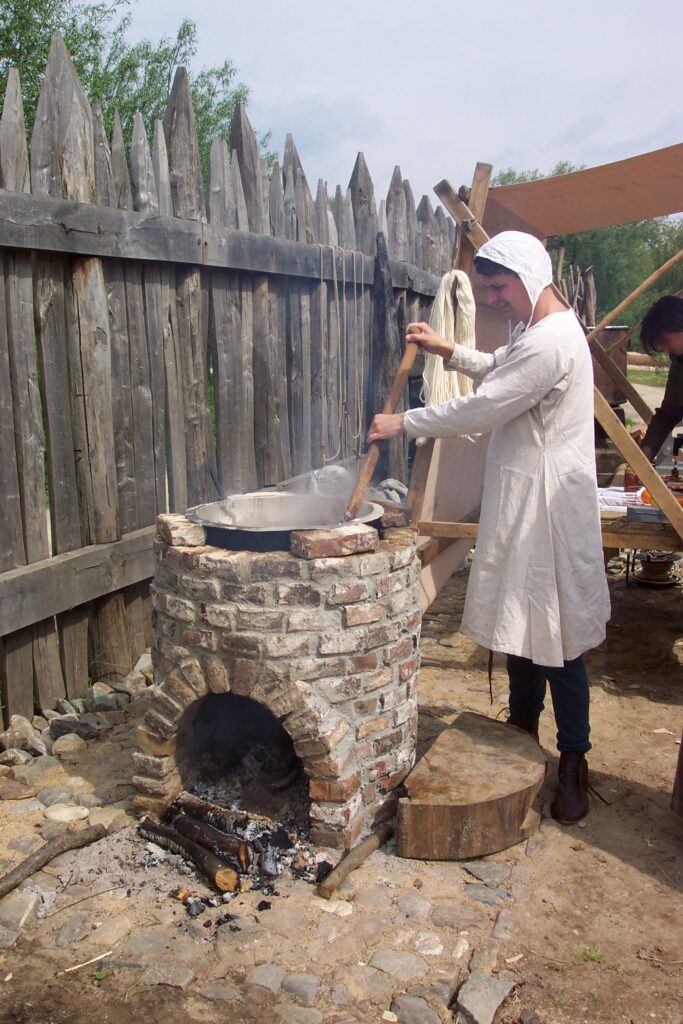
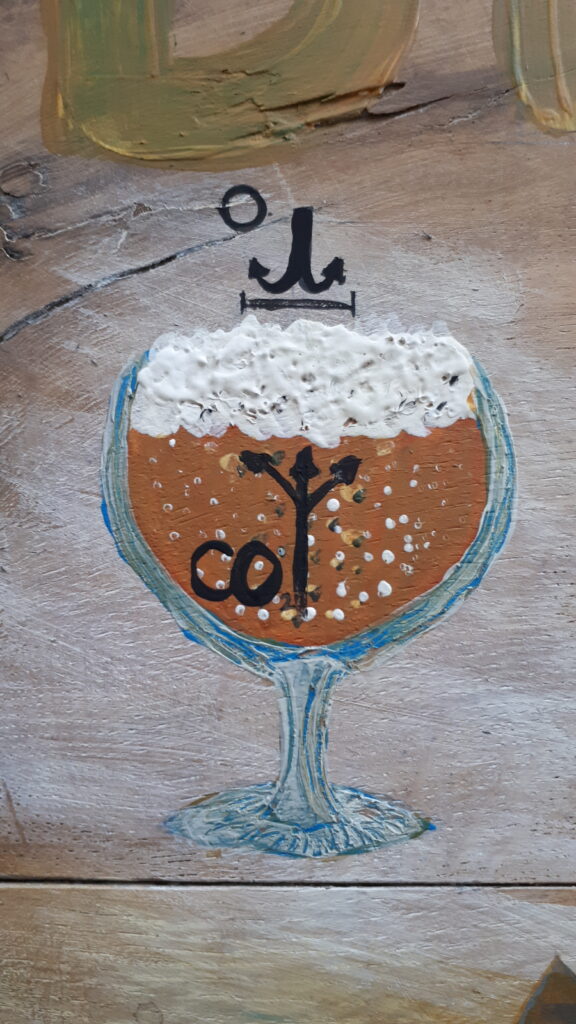
This year it will finally happen. We will brew in the museum, for the public next week! The museum has a gorgeous 13th century brewing kettle, but unfortunately we won’t be using that. It has been ‘fixed’ with tin some time ago, so we have to fix that first. Instead we will brew in the year 1000 part of the museum and we will use heated stones in our experiment. Join us if you want to see!
We are planning on trying some options that are most likely to have been used in those times, based on archeological and historical research. That means mashing with hot stones and using juniper for filtering. It is most probable in those times that people bought their gruit as a prepared paste at the gruit houses. A lot of people know gruit to be a herb mixture used before the use of hops, but it was probably more than that. It was probably a mixture with the grains as well. This way the gruit houses had control over the herbs used as a safety measure ánd it was probably a way to collect taxes as well. Of course the gruit houses don’t exist anymore, so we will make a gruit paste ourselves on Friday. Our challenge, the most difficult (yet health wise a very important) part will be the cooling down after cooking, especially since we will be brewing on a hot day. Of course the women will be doing the brewing. Whoever figured that beer was a man thing is obviously someone who didn’t look at the past and the MAJOR part women played in the world of beer. It’s only very very recent that the majority of the brewing and beer drinking community are men. We are conscious of the fact that we will also be using some things that are a bit anachronical, like the vessels made with metal instead of willow, but well, first things first, we have to get started on the brewing and experimenting first!

Amazing! Have fun and good luck 🙂
Thank you!